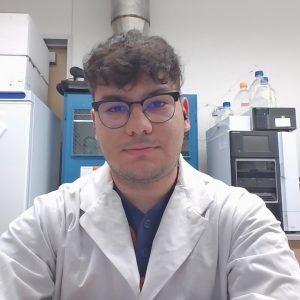Past Students 2024

Emily IP
Using Watermelon as a Bioreactor to produce therapeutic enzyme – Human Glucocerebrosidase; Developing watermelons as a self-contained, sterile, and environmentally friendly substitute for traditional bioreactor systems for producing therapeutic enzymes

Naomi Pluma
Phytohormones have been known to defend tissues and roots, cell elongate and get rid of unwanted microbes. Now what we want to test is whether these hormones can keep the same abilities when placed in a sterile environment and applied drought as opposed to a non-sterilized environment.

Kayla Zinsmeyer
Using a greenhouse experiment, we investigated the differential impacts of native soil amendments from 11 established dunes across the Texas Gulf Coast on communities of dune plants. All live amendments improved plant performance, diversity, and the amount of fungal hyphae in the soil, which is strongly correlated with soil stability, though the extent of improvement varied by the soil amendment’s location of origin.

Ashley Tseng
Determine which combination of gene knockouts results in a higher yield of salicylic acid

Margaret Okeowo
My study aim is to analyze the immunostimulatory and anti-cancer properties of compounds derived from various edible mushrooms. The significance of this lies in its potential to pioneer cost-effective methods for extracting metabolites that exhibit immune-modulating and anti-breast cancer properties. By fractionationating crude polysaccharides and metabolites, I aim to pinpoint the specific compounds responsible for triggering immune responses and showcasing anti-cancer effects on breast cancer cells.

Presley Greer
My research has been conducted into cotton yield estimation methodologies. From the literature, a few methodologies of potential testability have been identified. This study is focused towards using Light Detection And Ranging (LiDAR) on an Uncrewed Areal Vehicle (UAV) to extract a bare earth digital surface model (DSM) and crop height model. The DSM will be used to identify any recessed areas within the field which could cause water to pool leading to water stress decreasing yields.

Frida Orbe
Spent Mushroom Substrate (SMS) refers to the byproduct generated by the mushroom industry, constituting a notable contributor to environmental pollution. The primary objective of this undertaking is to ascertain the compositional analysis of SMS biomass, with the ultimate goal of exploring its potential applications in various environmentally sustainable endeavors. SMS comprises several key components, including hemicellulose, cellulose, and lignin macromolecules. A particular emphasis in this investigation is the identification and utilization of lignin macromolecules, given their significance within the SMS as a valuable resource.

Yiyi Zhang
Check the sterilization ability for ozone on mushroom substrate

Rodrigo Costabella
I am designing a vector plasmid construct that will allow for the CRISPR/Cas9 protein system to be introduced into B. subtilis and cut the abrB gene and neutralize its effects.

Vanna Nguyen
In my project, I will be altering the regio-specific hydroxylation site of phenylalanine hydroxylasen to produce m-tyrosine.